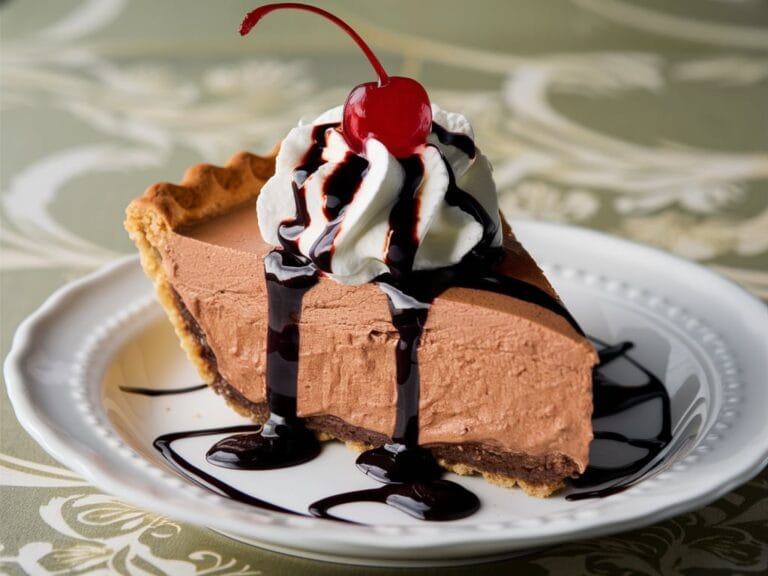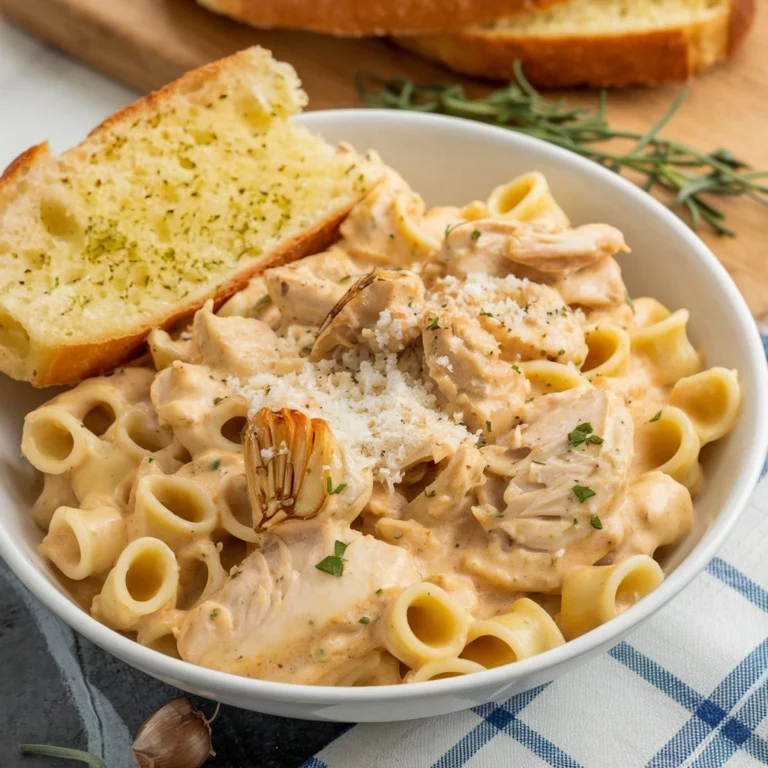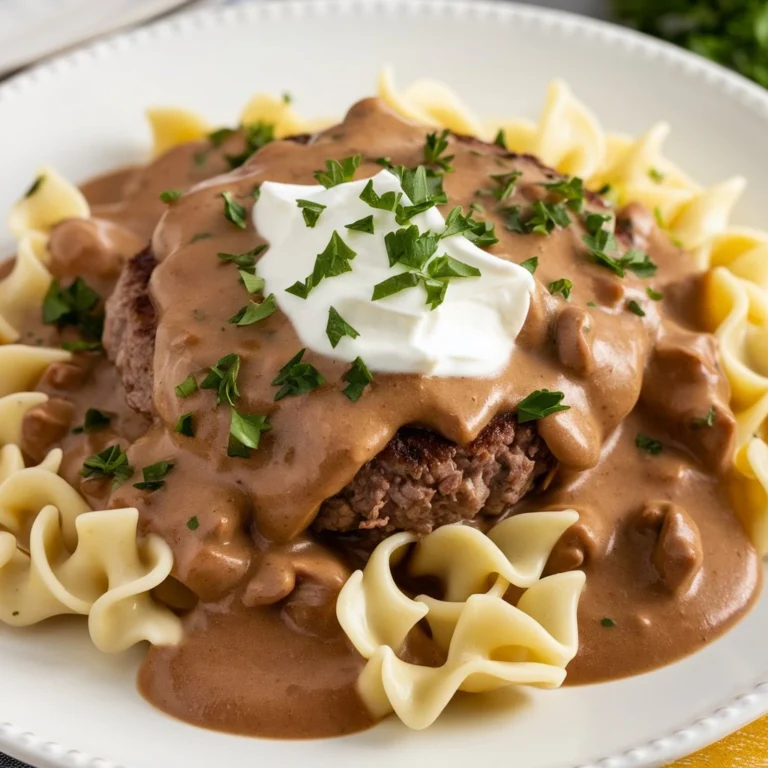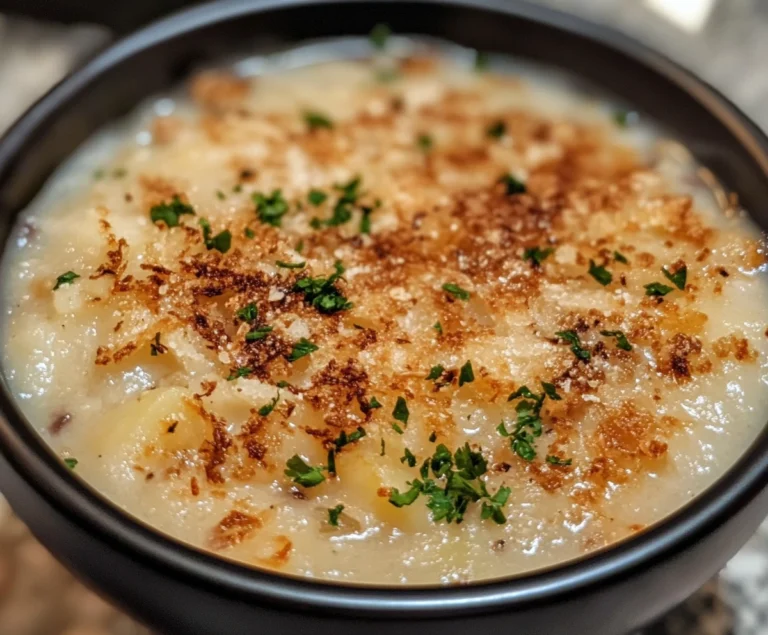Garlic Parmesan Chicken Pasta
Garlic Parmesan Chicken Pasta: A Complete Guide to Mastering This Creamy Dish
There are few things as comforting as a rich, creamy pasta dish. When that dish combines garlic, parmesan, and chicken, you know you’re in for a treat. Garlic Parmesan Chicken Pasta is a delicious, easy-to-make meal that balances savory garlic with the rich, creamy flavor of parmesan cheese. This guide will help you master the dish while exploring ways to elevate it and make it your own.
Whether you’re new to cooking or an experienced home chef, this recipe provides a great foundation for a comforting meal. It’s versatile enough to suit various dietary needs and preferences, making it a favorite for family dinners, dinner parties, or even meal prep. By the time you finish reading, you’ll be fully equipped to make a Garlic Parmesan Chicken Pasta that will leave everyone asking for seconds!
Why Garlic Parmesan Chicken Pasta is a Perfect Dish for Any Occasion
When we think of Garlic Parmesan Chicken Pasta, we think of the rich combination of ingredients that all work together to create a perfect bite. What makes this dish so universally loved is its ability to deliver a meal that’s both satisfying and versatile. Whether it’s for a special occasion, a family dinner, or a weeknight meal, this dish fits the bill.
One reason this recipe stands out is its use of garlic. Garlic is one of those key ingredients that not only adds a lot of flavor but also offers a range of health benefits. Known for its ability to boost immunity and support heart health, garlic is also a staple in many global cuisines, making it a beloved and versatile component in any kitchen. If you’re curious about the benefits of garlic in your diet, check out this comprehensive article on the health benefits of garlic.
Beyond garlic, the rich creaminess of the parmesan cheese ties the dish together beautifully. Parmesan is a hard, granular cheese that adds a savory, nutty flavor to any dish. The combination of parmesan and heavy cream forms the luxurious sauce that gives this dish its signature comfort-food appeal. To truly appreciate the importance of quality parmesan, read this article on the different types of parmesan cheese.
Finally, the chicken provides a hearty protein that makes this dish feel like a complete meal. Boneless, skinless chicken breasts are ideal for this recipe because they cook quickly and absorb the flavors of the garlic and parmesan sauce.
Ingredients Breakdown: Choosing the Right Components for the Best Flavor
The success of any dish often comes down to the quality of the ingredients. Let’s break down the key ingredients for Garlic Parmesan Chicken Pasta and explore how each one contributes to the dish’s flavor profile and texture.
For the Chicken:
- Boneless, Skinless Chicken Breasts (1 lb):
Chicken breasts are ideal because they are lean, cook quickly, and absorb the flavors of the sauce. Make sure to butterfly or pound the chicken breasts to about ½ inch thickness. This ensures that they cook evenly and quickly without drying out. - Italian Seasoning (1 tbsp):
A mix of dried herbs like oregano, basil, thyme, and rosemary adds a robust flavor to the chicken without overwhelming the dish. - Paprika (½ tsp):
Paprika adds a subtle smoky flavor and enhances the color of the chicken, giving it an appealing golden-brown finish. - Salt and Pepper (to taste):
These essential seasonings ensure that both the chicken and the sauce have the right balance of flavors. - Avocado Oil (1 tbsp):
Avocado oil is ideal for searing the chicken because of its high smoke point. It helps achieve a nice golden sear on the chicken without burning. Olive oil is a suitable substitute if you prefer a more Mediterranean flavor.
For the Pasta and Sauce:
- Avocado Oil (1 tbsp):
Again, avocado oil is used here to sauté the onions and garlic. Its neutral flavor and high smoke point make it a great option for cooking at high temperatures. - Unsalted Butter (1 tbsp):
Butter adds a rich flavor to the sauce and balances out the garlic and onions. Unsalted butter allows you to control the salt level in the dish. - Yellow Onion (½ large, diced):
The onion adds sweetness and depth to the sauce. Make sure to dice it finely so that it blends smoothly into the sauce. - Garlic (4-6 large cloves, minced):
The star of the show! Garlic adds its signature savory and slightly spicy flavor, which permeates the entire dish. Don’t skimp on the garlic; its boldness is what makes this dish shine. - Penne Pasta (8 oz):
Penne is ideal because its ridged surface captures the sauce well, ensuring each bite is full of flavor. You can substitute with other pasta types like fettuccine, spaghetti, or rotini, depending on what you have on hand. Gluten-free options also work well here. - Chicken Broth (2 cups):
Cooking the pasta in chicken broth instead of water adds an extra layer of flavor. The broth is absorbed into the pasta as it cooks, enhancing the overall richness of the dish. - Parmesan Cheese (1 cup, finely grated):
Freshly grated parmesan is key to achieving the best flavor and texture. Pre-grated cheese often contains anti-caking agents that prevent it from melting smoothly into the sauce. - Heavy Cream (½ cup):
Heavy cream gives the sauce its luxurious, silky texture. If you’re looking for a lighter option, you can substitute with whole milk, but keep in mind that the sauce won’t be as rich. - Fresh Parsley (2 tbsp, chopped):
Parsley adds a pop of color and a fresh, herbaceous note that cuts through the richness of the sauce.
Optional Ingredients for Customization:
- Red Pepper Flakes (for heat):
If you like a bit of spice, red pepper flakes are a great addition. - Spinach or Broccoli:
Adding greens like spinach or broccoli gives the dish extra nutrition and balances the richness of the sauce with freshness. - White Wine (for deglazing):
For a more complex flavor, deglaze the pan with white wine after sautéing the garlic and onion. This adds acidity and depth to the sauce.
Step-by-Step Cooking Instructions: Mastering the Process
Now that you have your ingredients ready, let’s walk through the step-by-step process of making this mouthwatering Garlic Parmesan Chicken Pasta.
1. Season and Cook the Chicken
Start by preparing the chicken. Mix together the Italian seasoning, paprika, salt, and pepper in a small bowl. Pat the chicken dry with paper towels and then rub both sides with the seasoning mixture. This step ensures that the chicken absorbs the flavors of the herbs and spices.
Heat a large pan over medium heat and add avocado oil. Once the oil is hot, add the seasoned chicken breasts. Cook the chicken for 4-5 minutes on each side until golden brown and fully cooked. The internal temperature should reach 165°F (75°C) to ensure it’s safe to eat.
Remove the chicken from the pan and set it aside to rest. This resting period allows the juices to redistribute throughout the chicken, keeping it moist and flavorful when sliced.
2. Create the Garlic Parmesan Sauce
Using the same pan, reduce the heat to medium-low and add more avocado oil along with the unsalted butter. Once the butter has melted, add the diced yellow onion and sauté for 3-4 minutes until it becomes translucent.
Next, add the minced garlic and cook for an additional minute. Be careful not to let the garlic burn, as it can become bitter if overcooked. If you’re using white wine, now is the time to deglaze the pan, scraping up any browned bits from the bottom. This step adds extra flavor to the sauce.
3. Cook the Pasta in Chicken Broth
Once the garlic and onion are nicely sautéed, pour in the chicken broth. Bring the broth to a simmer and add the penne pasta. Stir to make sure the pasta is fully submerged in the liquid.
Cover the pan and let the pasta cook for about 10 minutes or until it’s al dente. Cooking the pasta in the broth infuses it with a rich, savory flavor that enhances the entire dish.
4. Add Parmesan and Cream
When the pasta is cooked to your liking, turn off the heat and stir in the parmesan cheese and heavy cream. Stir gently until the parmesan melts and the sauce becomes creamy and smooth. If the sauce is too thick, you can add a little more chicken broth to thin it out.
Season the sauce with salt and pepper to taste. Be sure to taste as you go, since the parmesan adds saltiness on its own.
5. Slice the Chicken and Combine
Take the rested chicken breasts and slice them into thin strips. Add the sliced chicken back into the pan with the pasta and sauce. Toss everything together so that the chicken is well-coated in the sauce.
Garnish with chopped fresh parsley for a touch of color and freshness. Serve the pasta hot and enjoy!
Variations and Customizations: Making It Your Own
One of the best things about Garlic Parmesan Chicken Pasta is its adaptability. Whether you’re looking to add more vegetables, make the dish gluten-free or dairy-free, or switch up the protein, the options are endless. Here are some of the most popular variations:
Adding Vegetables
Adding vegetables is a great way to enhance the nutritional value of this dish. Some options include:
- Spinach:
Add a few handfuls of fresh spinach at the end of cooking, just before serving. The heat from the pasta will wilt the spinach, and it blends beautifully with the creamy sauce. - Broccoli:
Steam or roast broccoli and toss it into the pasta for a burst of color and a healthy dose of fiber. - Mushrooms:
Sauté mushrooms along with the garlic and onions for an earthy, umami-rich addition to the dish.
Protein Substitutes
If you’re looking to change up the protein, there are several alternatives that work well in this recipe:
- Shrimp:
Shrimp cooks quickly and pairs perfectly with the garlic parmesan sauce. Simply sauté the shrimp until pink and toss them in with the pasta and sauce. - Bacon:
Crispy bacon adds a smoky, savory element to the dish. Cook the bacon separately, then crumble it over the pasta just before serving. - Tofu:
For a vegetarian option, use tofu as a protein substitute. Press and cube the tofu, then pan-fry it until golden brown before adding it to the dish.
Dairy-Free and Gluten-Free Options
This dish can easily be made dairy-free or gluten-free with a few simple swaps:
- Dairy-Free:
Substitute the butter with vegan butter or use an extra tablespoon of avocado oil. Replace the heavy cream with a plant-based alternative, such as coconut cream or almond milk. You can also use a dairy-free parmesan substitute. - Gluten-Free:
Simply swap the regular pasta for your favorite gluten-free pasta. There are plenty of great options available, including rice-based or chickpea-based pastas.
Serving Suggestions: The Perfect Sides and Pairings
A rich and creamy dish like Garlic Parmesan Chicken Pasta pairs wonderfully with lighter, more refreshing sides. Here are a few suggestions to round out your meal:
- Garlic Bread:
For those who can’t get enough garlic, serve this pasta with crusty garlic bread. The crispy texture of the bread contrasts beautifully with the creamy pasta sauce. - Roasted Vegetables:
Roasting vegetables like broccoli, asparagus, or Brussels sprouts adds a healthy and colorful side dish that complements the richness of the pasta. - Green Salad:
A simple green salad with a light vinaigrette helps cut through the richness of the dish and adds a refreshing element to the meal. Consider a mix of arugula, spinach, and baby greens with a lemon or balsamic vinaigrette. - Wine Pairing:
Pair your pasta with a crisp Chardonnay or Sauvignon Blanc. The acidity of the wine helps balance the richness of the cream sauce. If you prefer red wine, a light Pinot Noir also works well.
Pro Tips for Perfecting Garlic Parmesan Chicken Pasta
To ensure your Garlic Parmesan Chicken Pasta turns out perfectly every time, keep these tips in mind:
- Use Fresh Ingredients:
Fresh garlic, freshly grated parmesan, and high-quality chicken make a significant difference in the flavor of the dish. Avoid pre-grated parmesan as it often contains anti-caking agents that can affect the sauce’s texture. - Cook the Pasta Al Dente:
Be sure to cook the pasta until it’s just al dente. Overcooked pasta will become mushy, especially when tossed in a creamy sauce. - Don’t Rush the Chicken:
Take your time when searing the chicken. A golden-brown crust adds flavor and texture, so make sure the chicken is fully cooked and nicely seared before removing it from the pan. - Deglaze for Extra Flavor:
Deglazing the pan with white wine or chicken broth after sautéing the garlic and onions adds depth to the sauce. Don’t skip this step! - Serve Immediately:
While this dish can be reheated, it’s best enjoyed fresh. The cream sauce tends to thicken as it cools, so serve it immediately for the best texture.
Storing and Reheating Leftovers
If you have leftovers, Garlic Parmesan Chicken Pasta stores and reheats well. Here’s how to ensure your leftovers taste just as good the next day:
Storing
- Refrigerate:
Store leftovers in an airtight container in the refrigerator for up to three days. Allow the pasta to cool completely before sealing the container. - Freezing:
While it’s possible to freeze this dish, the texture of the cream sauce may change once thawed. If you do choose to freeze it, store it in an airtight container for up to two months.
Reheating
- On the Stovetop:
The best way to reheat this dish is on the stovetop over low heat. Add a splash of cream or chicken broth to help loosen the sauce as it warms. - In the Microwave:
You can also reheat in the microwave. Place the pasta in a microwave-safe dish, cover loosely, and heat in 30-second intervals, stirring in between.
Frequently Asked Questions (FAQs)
Can I make this dish ahead of time?
Yes, you can prepare the chicken and pasta ahead of time. Store them separately and combine them just before serving. This helps prevent the pasta from absorbing too much sauce and becoming mushy.
What can I use instead of heavy cream?
If you’re looking for a lighter option, you can use whole milk or half-and-half instead of heavy cream. For a dairy-free alternative, try coconut cream or almond milk.
Is this dish gluten-free?
It can be! Simply swap the regular pasta for your favorite gluten-free variety. Make sure to double-check that your chicken broth is also gluten-free.
Can I freeze Garlic Parmesan Chicken Pasta?
Yes, but keep in mind that the texture of the cream sauce may change when thawed. It’s best to freeze the dish in portions and thaw it in the refrigerator before reheating. When reheating, add a bit of cream or broth to bring back the creaminess of the sauce.
What vegetables can I add to this dish?
Spinach, broccoli, asparagus, or mushrooms are all great additions. You can steam or roast the vegetables before adding them to the pasta, or simply toss them in with the pasta during the last few minutes of cooking.
How do I make this dish spicier?
For a bit of heat, add red pepper flakes to the sauce when you sauté the garlic and onion. You can also serve the dish with a dash of hot sauce or crushed chili peppers for an extra kick.







